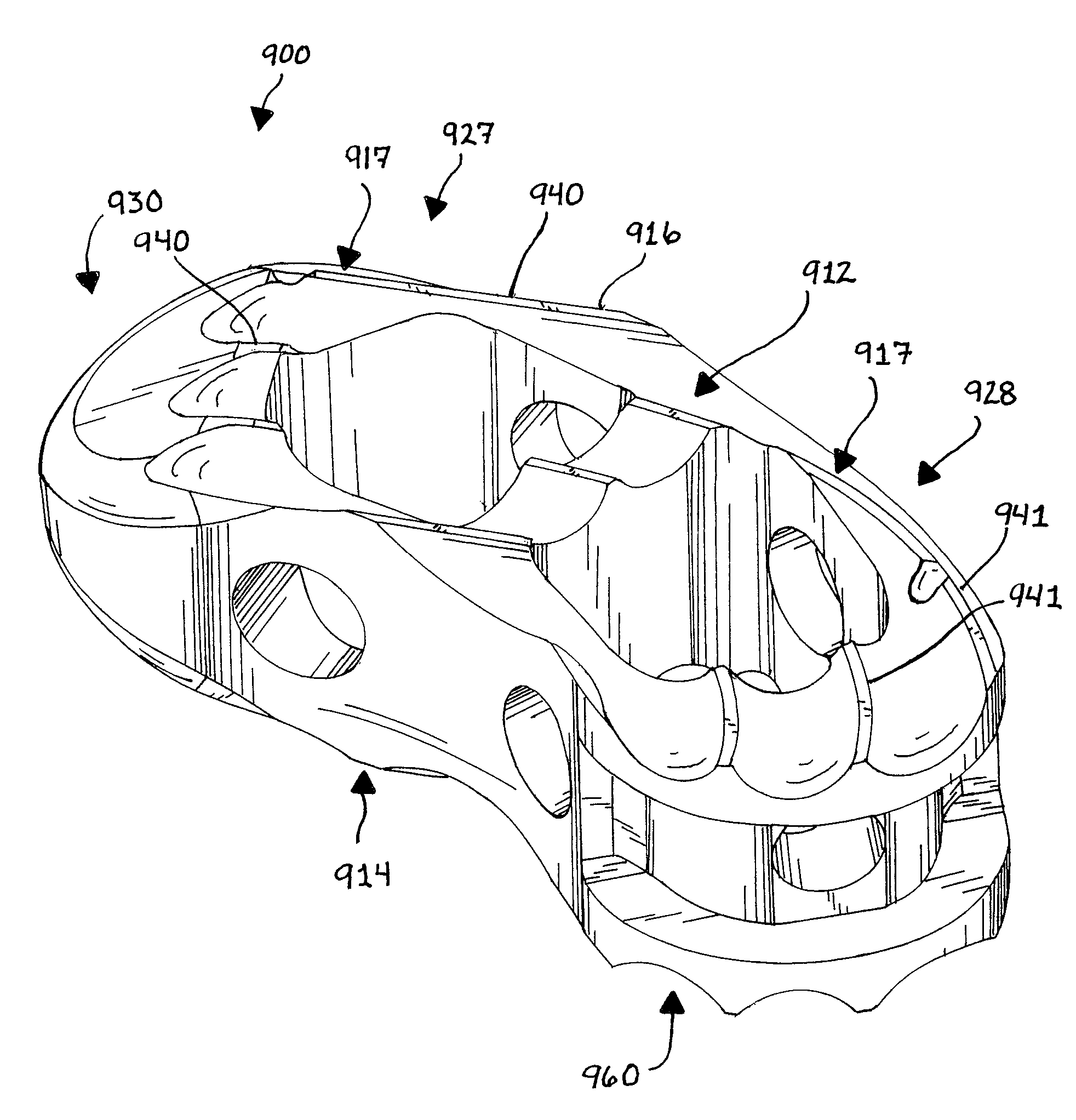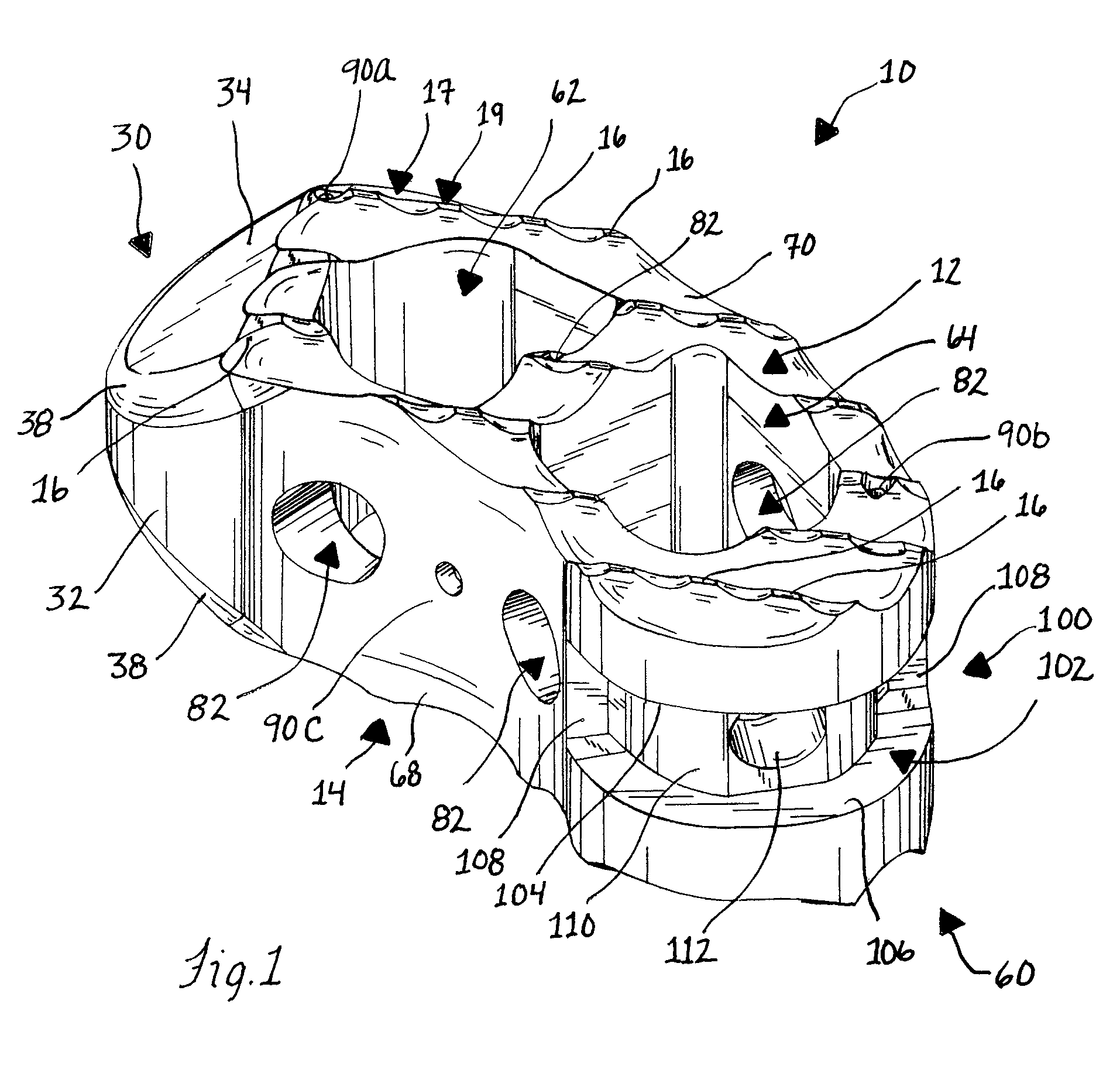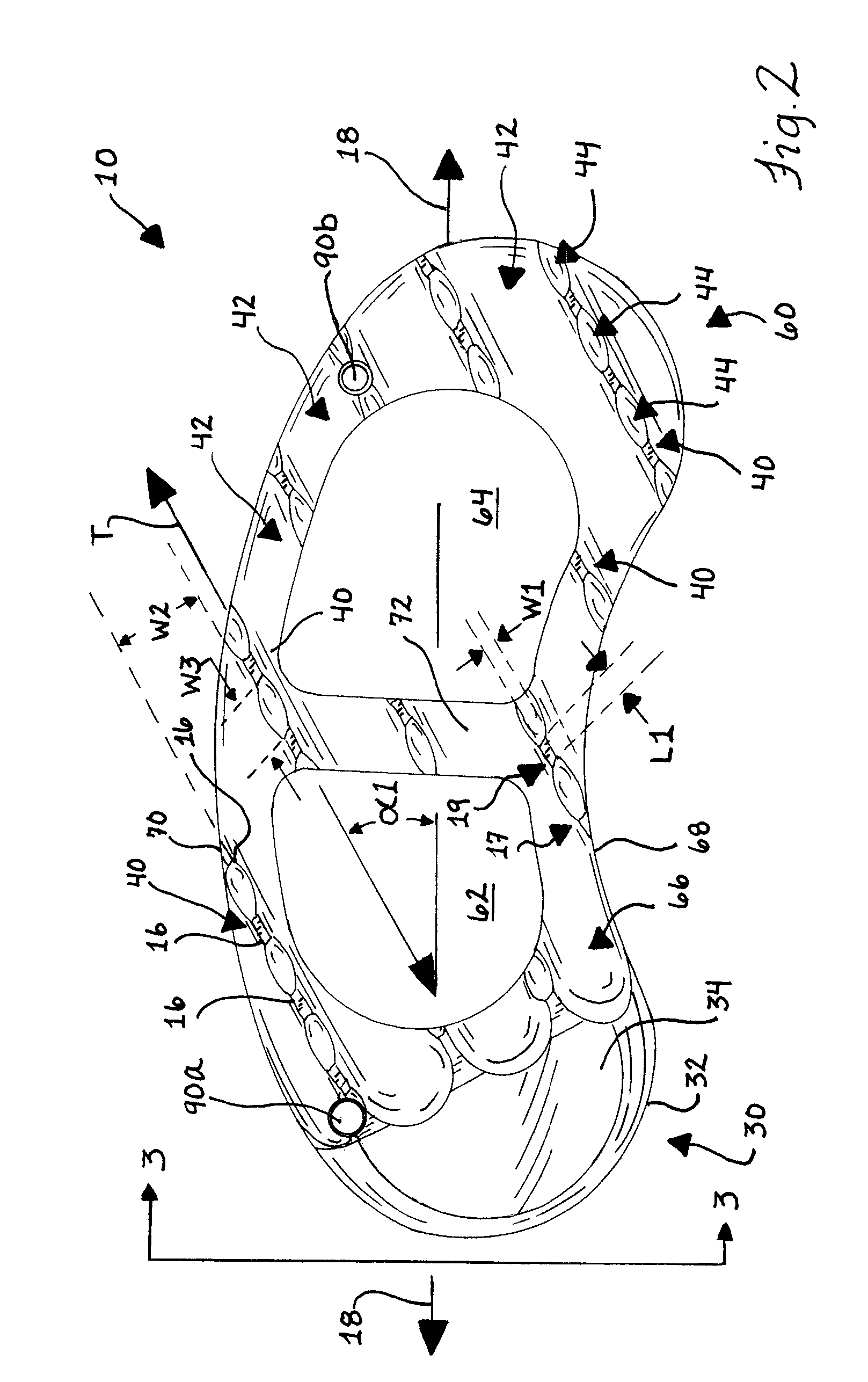Spinal stabilization device and methods
a technology of spinal stabilization device and spinal column, applied in the field of spinal stabilization device and method, can solve the problems of pain or limited physical activity and ability of people, lack of mobility, further damage and degeneration of spinal health,
- Summary
- Abstract
- Description
- Claims
- Application Information
AI Technical Summary
Benefits of technology
Problems solved by technology
Method used
Image
Examples
Embodiment Construction
[0089]Referring initially to FIG. 1, an implant device in the form of a vertebral body replacement device (VBR) 10 for spinal fusion surgery is illustrated for implantation within an intervertebral space between adjacent vertebrae. The VBR 10 enables the fusion surgery to be completed with a single VBR 10. As best seen in FIG. 2, the VBR 10 has a generally concavo-convex configuration along a longitudinal axis 18 of the VBR. As illustrated in FIG. 58, once implanted, the longitudinal axis 18 of the VBR extends generally laterally, that is, perpendicular to the anterior-posterior axis of the spine. Accordingly, the VBR 10 is curved so as to have a shape similar to that of a natural spinal disc. Thus, the VBR 10 is able to provide support to the spinal column across a large area.
[0090]The VBR 10 includes a number of features for promoting insertion within the intervertebral space, one of which is the shape of an insertion end 30 formed on an end of a body portion 26. During implantati...
PUM
 Login to View More
Login to View More Abstract
Description
Claims
Application Information
 Login to View More
Login to View More - R&D
- Intellectual Property
- Life Sciences
- Materials
- Tech Scout
- Unparalleled Data Quality
- Higher Quality Content
- 60% Fewer Hallucinations
Browse by: Latest US Patents, China's latest patents, Technical Efficacy Thesaurus, Application Domain, Technology Topic, Popular Technical Reports.
© 2025 PatSnap. All rights reserved.Legal|Privacy policy|Modern Slavery Act Transparency Statement|Sitemap|About US| Contact US: help@patsnap.com



